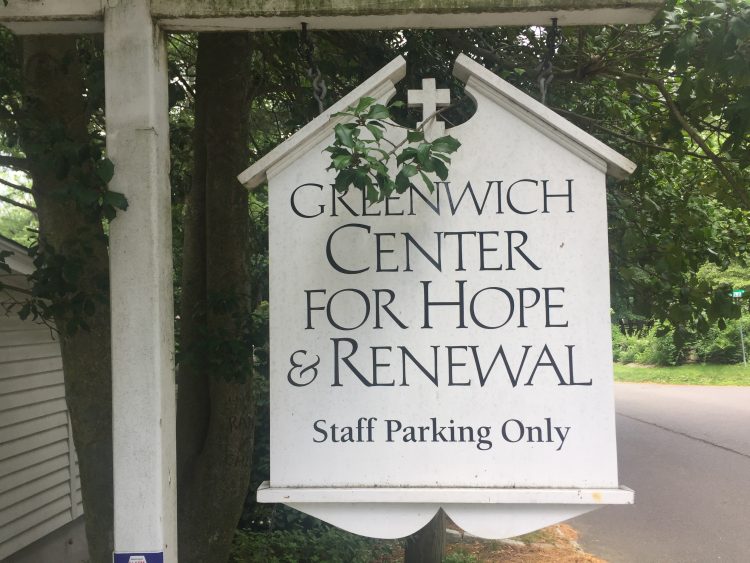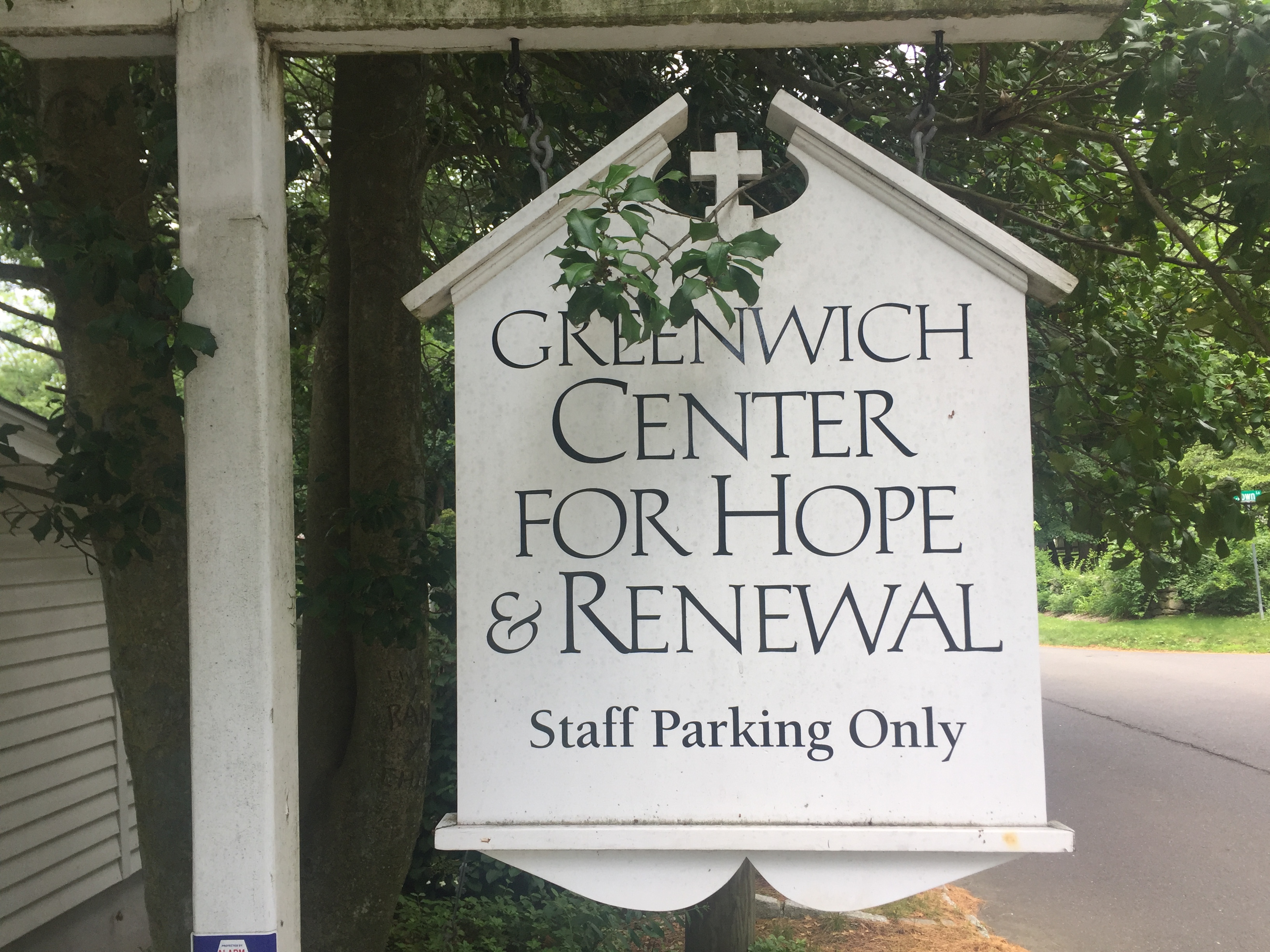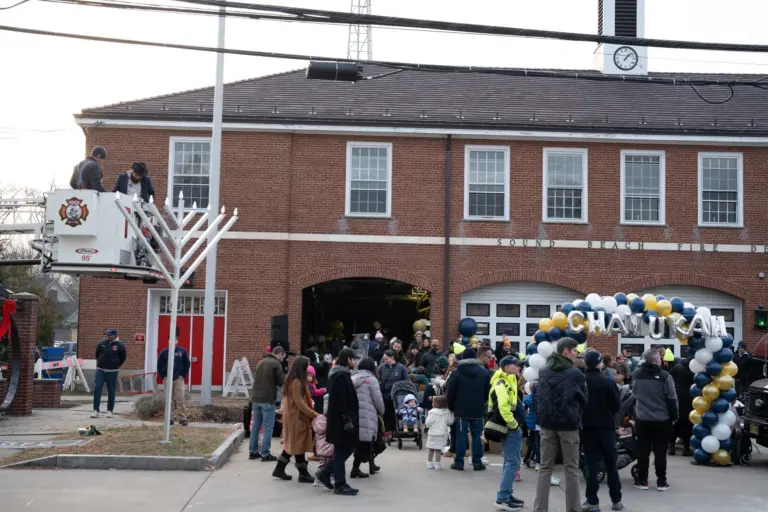

By Richard Kaufman
Sentinel Reporter
Over the course of the nearly eight-hour Planning & Zoning Commission meeting last week—which ended just before 3 a.m.—two controversial issues came to the forefront: the Center for Hope and Renewal at the old Stanwich Congregational Church on Taconic Road, and a plan for a re-subdivision of lots on Lake Avenue.
Various members of the community packed the Town Hall conference room both in support of and against the Center for Hope and Renewal, a facility that provides counseling services to patients in need.
The center submitted its application in the hopes of the Planning & Zoning Commission approving a special permit to allow “charitable use” on church property in a residential zone, since commercial uses are not permitted.
“[The center] receives two thirds of its operating revenue as donations,” said Thomas Heagney, the attorney for the applicant. “Only a third of it is actual fees that are received from the people who receive services. This is, as are many other non-profit organizations in town, a permitted use in the residential zones.”
But many neighbors disagreed, calling the center a commercial business. They also voiced displeasure over patients coming and going at night, notably to Alcoholics Anonymous and Narcotics Anonymous meetings. Neighbors were also upset that the church had possibly reneged on its original intentions for the old church. (Stanwich completed a new church down the street in 2006, but retained the old church building.)
Heagney opened his remarks by saying that the center has no intention of treating anyone having a crisis or treating people involved in criminal activities. The center deals with grief counseling, matrimonial matters, and the like, he said.
Heagney acknowledged the neighborhood concerns regarding AA and NA meetings, and assured everyone that those meetings would no longer take place because the leader of the group was moving and the group was disbanding.
Over the next two hours, members of the public came to the podium to voice their opinions on the matter.
The Rev. Dr. Nathan Hart said that no one understands the center more than he and his family, who live in the parsonage adjacent to the center on Taconic Road.
“Are you concerned about your children being close to the clientele? Ours are closer. Are you concerned about the noise? We hear it louder. Car traffic? We share a driveway with the center. Foot traffic? Occasionally we encounter people walking across our lawn,” he said. “We consider these inconveniences to be trivial in comparison with the immeasurable good that the Center for Hope and Renewal provides our community.”
Jill Marchak, a homeowner in Greenwich for 20 years, said she considers the center a treasure for the town. “It’s been enormously helpful to me and my family, and many friends.”
Troone Marchak, a former Greenwich High School student, said she received counseling from the center for her anxiety, which she said was crippling her academically. “I would not be the woman that I am today, the student that I am today, and the person who I am, as a contributing member to our community and society in general, without the aid that I received at the center,” she said.
Susan Hut, whose property is 150 yards from the center, was present at a 2002 Zoning Board of Appeals meeting and raised the question about the future of the old church, expressing concern about the activities that would take place. Hut read the transcript from that meeting in which Heagney promised to maintain certain restrictions.
“I know what the intentions were. There can be no doubt that Mr. Heagney and the Stanwich Church promised neighbors and the town of Greenwich that the old church would be used for occasional weddings or funerals,” she said after reading the transcript. “Now they are back, reneging on their own words. When will the town of Greenwich deal with this outrageous violation?”
Hut said the “business activity” of the center does not belong in her residential neighborhood or any other such neighborhood in Greenwich. “I’m a grandmother who likes to have her children and grandchildren visit and feel free to walk around the block. I want my neighborhood back and the safety back.”
Dr. Keith Raskin, a Greenwich resident of 11 years, said he understands and supports the help the center offers people, but noted that these patients are seeking “mental stability,” and with that comes unpredictability in behavior.
Kirsten Fitzgibbons, who lives across the street from the center, said she fears who and what she might come across whenever she goes outside at night to her mailbox.
On behalf of the upset neighbors, attorney John Tesei spoke for just over 30 minutes. He reminded the Commission of the purely zoning aspects they needed to consider, which stemmed from the ZBA of the special exception for the new Stanwich Church at 202 Taconic Road.
“In that approval there were four specific and relevant conditions relevant to today’s application,” he said. “One was no simultaneous use of the new and old church properties. No commercial uses were to be allowed on either property. There shall be no leasing. There shall be no schools other than the Bible School.”
Tesei noted the ZBA conditions must be adhered to.
Tesei went on to say that charitable organizations can, generally speaking, engage in some commercial activity. “It happens all the time,” he said.
“What’s boggled my mind from the beginning when it’s come to this application is this. Why are we here? Why is this application being brought to you when there’s such a big violation of the Board of Appeals’ conditions?” Tesei said.
The case is officially closed, and the Commission has 65 days to render a decision.

On the heels of the Stanwich Church debate came the plan for a re-subdivision of lots at 500 Lake Ave., which would divide two parcels totaling 10.244 acres into three parcels: Lot 1 would be 3.67 acres, Lot 2 would be 3.05 acres, and Lot 3 would be 3.52 acres.
This was the second application for this site that the Commission has reviewed this year. The motion failed to carry the first time due in large part to the lack of information provided within the timeline the Commission needed to make a decision.
The hearings have focused on whether the proposal complies with Section 6-296 of the Town Subdivision Regulations that states, “The natural features of the site should be preserved to the fullest extent, and the felling of trees should be held to a minimum.”
The original proposed driveway access from Round Hill Road would require significant tree removal.
Heagney, on behalf of the applicant, presented a new plan, which utilizes the existing driveway on Lake Avenue rather than one on Round Hill Road. The driveway would serve all three lots.
Hilary Gunn, the RTM District 7 vice chair, said her district was very excited about the change in the driveway location. “We do still request that whatever can be done for permanent hillside preservation be done, because that’s still just as important an issue whether or not there’s a driveway [from Round Hill Road],” she said.
Denise Savageau, the conservation director for the town of Greenwich, spoke at the meeting and said she could recommend that the subdivision be approved, based on the new access off Lake Avenue which is what the Conservation Department requested.
Savageau brought up concerns about erosion sediment controls, because the access road is close to a steep slope. Heagney said he’d be willing to submit the controls to the Commission staff and to the Inland Wetlands and Watercourses Agency for review.
There was also some concern about whether construction would begin on all three lots at once, because a lot of acreage becomes exposed at one time and soil and erosion control comes into play, according to Planning and Zoning Director Katie DeLuca.
But the commission voted unanimously to approve the re-subdivision. The Commission decided that each of the lot developments would be reviewed by the Planning and Zoning staff. The first site plan for development will include a soil and erosion plan as well as the development logistics and construction phasing plan.
The staff will review the driveway, walls, rain-garden, S&E controls, and any work near the steep slopes.
“The applicant shall make every effort to protect the forested area by Round Hill,” said Commission member Margarita Alban. “There shall not be any driveway access from Round Hill Road, period.”



